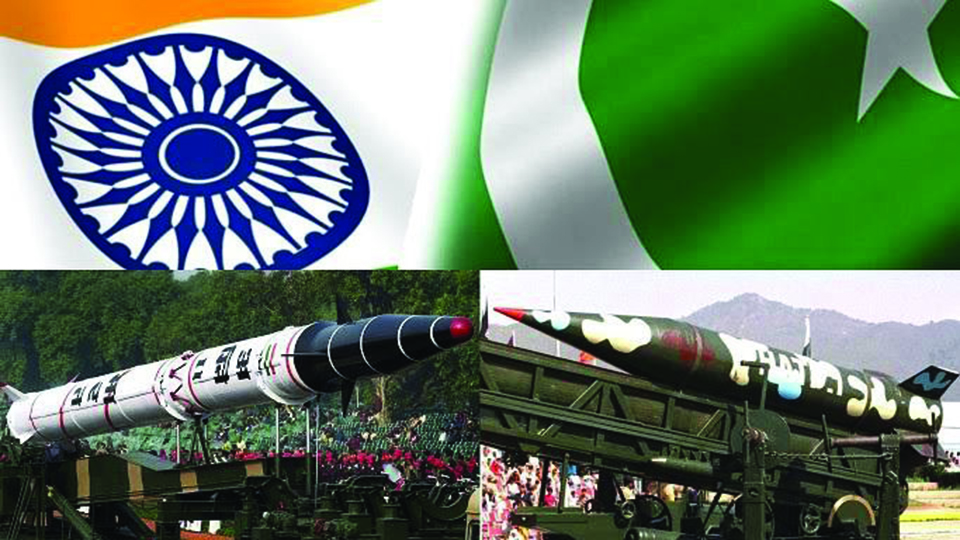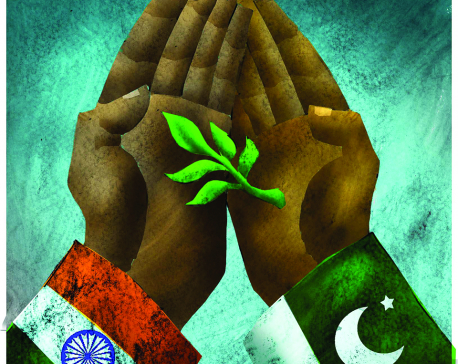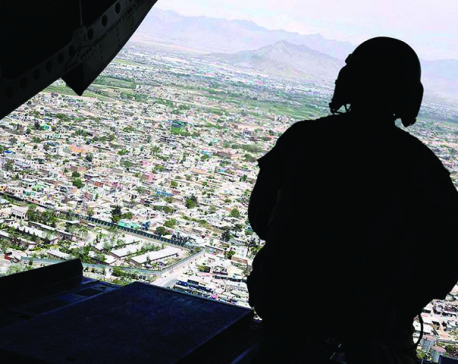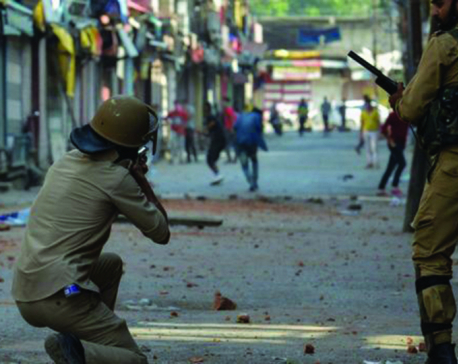
OR

Unless Kashmir issue is amicably settled, South Asia will continue to remain under a looming shadow of nuclear war
Current India-Pakistan crisis has once again brought to the fore the prospect of escalation of a full scale war under a long shadow of nuclear weapons in South Asia. Indian Air Force struck the biggest Jasih-e-Mohammed (JeM) militant camp in Balakot in Pakistan occupied Kashmir (POK) on the early morning of February 26. It was retaliatory response against Jasih-e-Mohammed attack on Indian security forces convoy in Pulwama district in Jammu and Kashmir on February 14, which killed 44 Indian Centre Reserve Police Forces (CRPF).
India-Pakistan relationship is fraught with challenges since 1947. Both countries have fought three wars and engaged in numerous crises (1998 Kargil crisis, 2001-2002 terrorist attack and 2008 Mumbai Terror attack) since they became independent in 1947. They have witnessed one of the most protracted conflicts for the territory of Kashmir. Their historical bitterness continued in the form of series of crises after they became nuclear powers in 1998, which poses the risk of conflict escalating into nuclear war.
The international community and regional actors including Nepal are wary of the situation. However, the lesson learnt from the decade of overt nuclearization in the region provides supportive generalization on nuclear deterrence in South Asia. India and Pakistan have exhibited considerable learning to enhance the stability of nuclear deterrence in South Asia. Presence of nuclear weapons in South Asia has meant that nuclear weapon instigates crisis in the first place, but once the crisis gets underway the fear of escalation to nuclear war brings considerable restraint, hence playing the role of crisis manager. We will be witnessing the same this time.
Limiting escalation
Mutual possessions of nuclear weapons have limited the escalation of crisis but it has not prevented the crisis from occurring at ‘sub-conventional level.’ Pakistan’s nuclear weapons constrain Indian conventional forces and provide a shield for Pakistan.
Pakistan’s ability to exploit the conflict will continue as its nuclear weapons capability will embolden it to pursue this strategy, while undermining India’s conventional superiority. India’s inability to use its superior conventional forces on Pakistan because of fear of nuclear escalation characterizes the dual role of nuclear weapons in South Asia. The Pulwama terrorist attack is the deadliest attack in decades on security forces in Jammu and Kashmir, which will be recorded as another incident in series of Pakistan-sponsored low-intensity conflict strategy. Nuclear weapons provide Pakistan to pursue this strategy with the knowledge that India will be inhibited by using its superior conventional forces.
India has learned that it can wage a limited war with Pakistan without crossing Pakistan nuclear threshold. India’s ‘Cold Start Doctrine’ enables it to launch a large-scale attack on Pakistan, across a long but relatively shallow front, within 72–96 hours of an order to prepare to move out. Cold Start Doctrine is a conceptual strategy that moves away from India’s old doctrine of ‘massed offensive’ to the possibility of intense but limited and controllable conflicts. Thus, India has understood that in prevailing geopolitical situation dismembering Pakistan, such as in the war of 1971, is not possible and hence it has to resort to limited war. It could be argued that ‘Balakot’ and Uri attack are gradually taking the form of implementation of India’s limited war doctrine against Pakistan.
Sight of future
In the days to come, India and Pakistan might continue to exchange fire along the border in Kashmir, which will result in dozens of military and civilian casualties on both sides. The retaliatory measures applied by both countries to shoot down each other’s fighter jets for violation on each other’s air space might add fuel toward escalation of tension.
Nuclear weapons have played a dual role in post-1998 crises but nuclear weapon has also prevented the crisis from escalating into full-scale war.
India and Pakistan have developed a learning which has contributed to maintaining a nuclear stability in South Asia. First, India and Pakistan have developed their own nuclear doctrines. India proposed ‘no-first use policy’ but massive retaliations. Nonetheless both countries will use nuclear weapons when their national existence is under threat. While India will use any nuclear attack against Pakistan, Pakistan will use it only when its national existence is threatened. Whether Pakistan will use its nuclear weapons as weapons of last resort has created confusion among Indian decision makers. Pakistan will likely maintain this ambiguity, which has acted as an effective deterrence against Indian conventional forces.
India’s readiness to fight a limited war through such surgical strikes has lowered Pakistan nuclear threshold and increased the prospects of strategic miscalculation. Therefore, it could increase the prospects of accidental war due to different threat perceptions on both sides of military planners. Pakistan has executed its nuclear deterrence with its conventional forces to deter India from implementing its limited war doctrine. India, on the other hand, wants to punish Pakistan for its tactics of supporting the terrorist group like Jasih-e-Mohammed so that it would not repeat similar incidents in the future.
Again India is not able to develop a devising method to punish Pakistan, mainly due to fear of nuclear escalation. Leaders of both countries seem to be aware of their respective strategic miscalculations. The way forward to resolve this crisis is through bilateral dialogue. International and regional actors have urged both countries to apply strategic restraint to prevent the crisis from escalating. But only way of resolving such crisis from occurring in future is by resolving Kashmir issue amicably. Otherwise South Asia will continue to remain under the looming shadow of nuclear war.
The author is a project officer at Geneva Centre for Democratic Control of Armed Forces (DCAF)
rohit.karki@gmail.com
You May Like This

Bringing peace in Kashmir
India and Pakistan should engage in dialogue with or without external mediation to find lasting solution of Kashmir problem ... Read More...

More than windmills in South Asia
With the end of the Soviet military presence in Afghanistan in February 1989 and the end of Cold War, the... Read More...

Kashmir will rise
Abrogation of Article 370 marks the dawn of real politics in Kashmir. In the new era, Kashmiris can enjoy free... Read More...

Just In
- Indians vote in the first phase of the world’s largest election as Modi seeks a third term
- Kushal Dixit selected for London Marathon
- Nepal faces Hong Kong today for ACC Emerging Teams Asia Cup
- 286 new industries registered in Nepal in first nine months of current FY, attracting Rs 165 billion investment
- UML's National Convention Representatives Council meeting today
- Gandaki Province CM assigns ministerial portfolios to Hari Bahadur Chuman and Deepak Manange
- 352 climbers obtain permits to ascend Mount Everest this season
- 16 candidates shortlisted for CEO position at Nepal Tourism Board







_20220508065243.jpg)











Leave A Comment